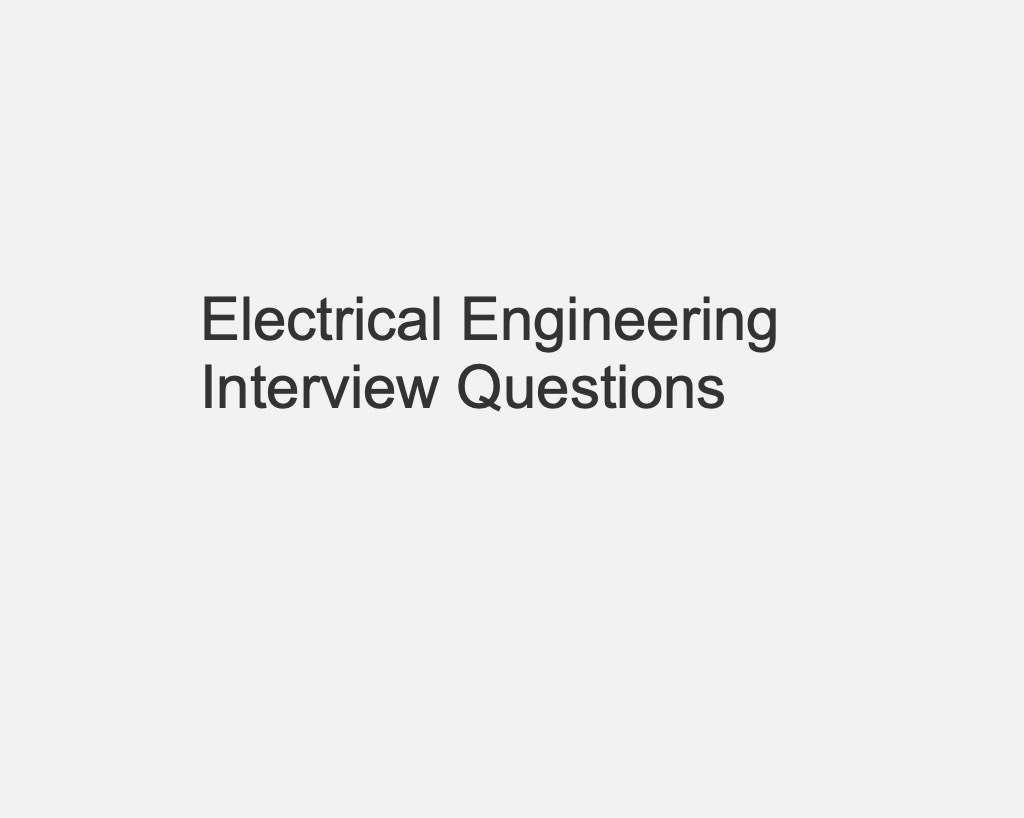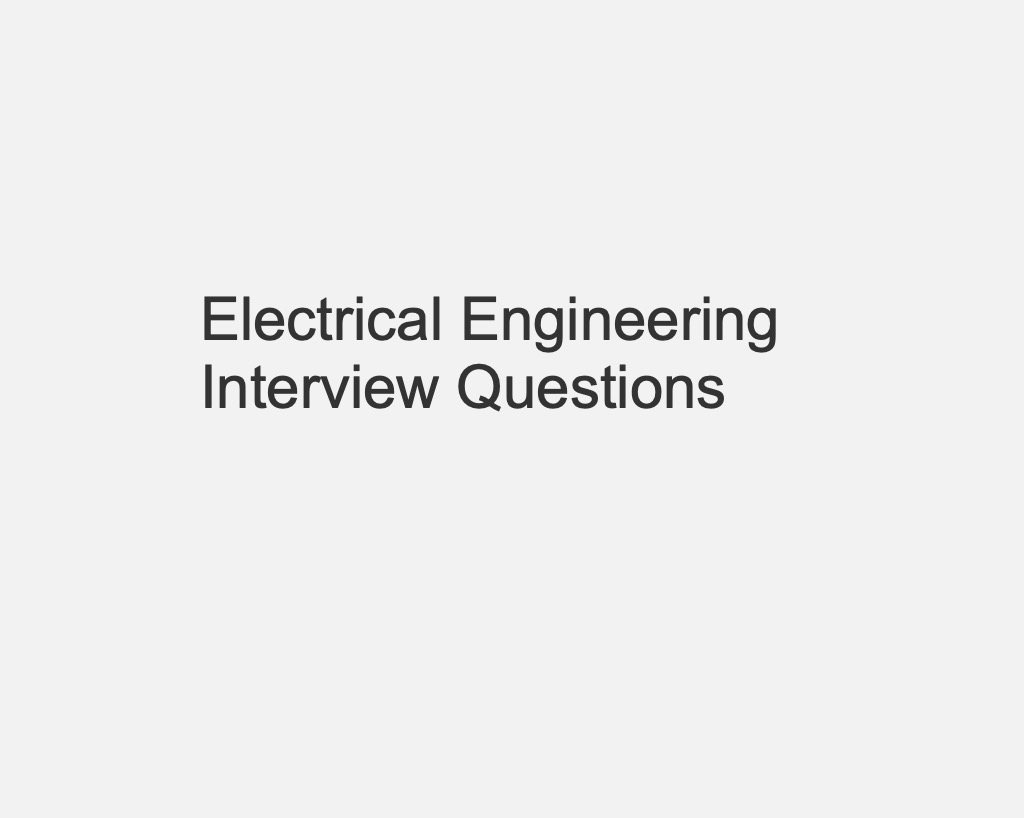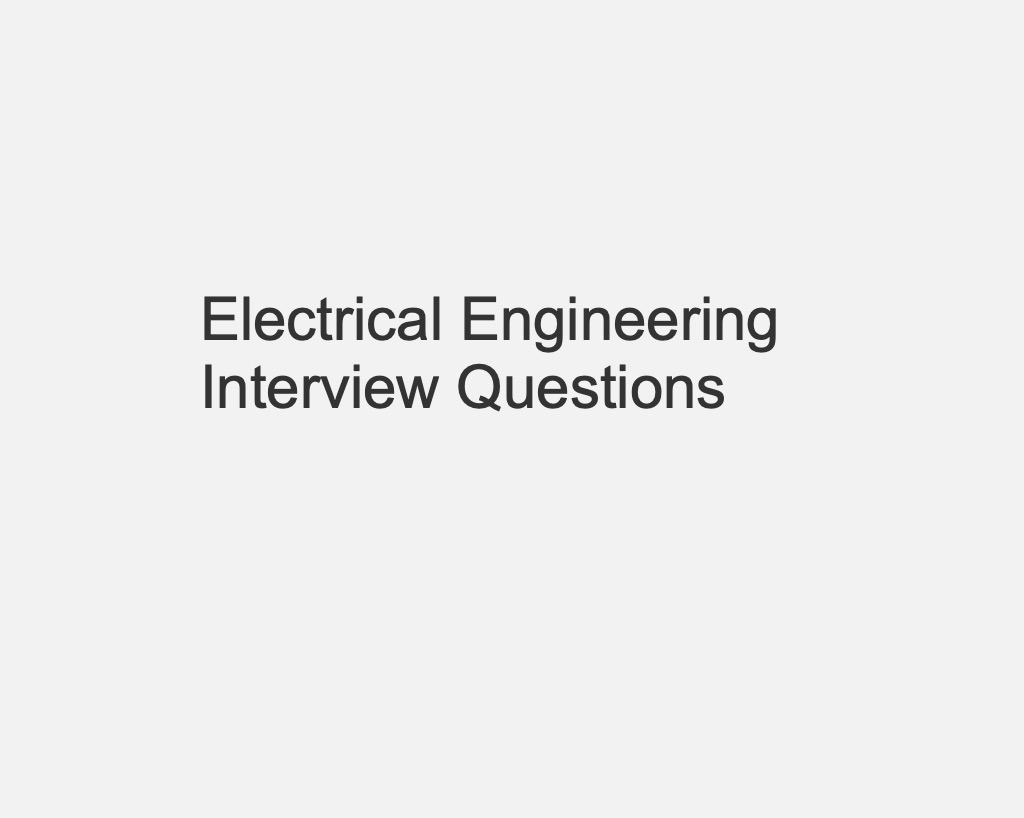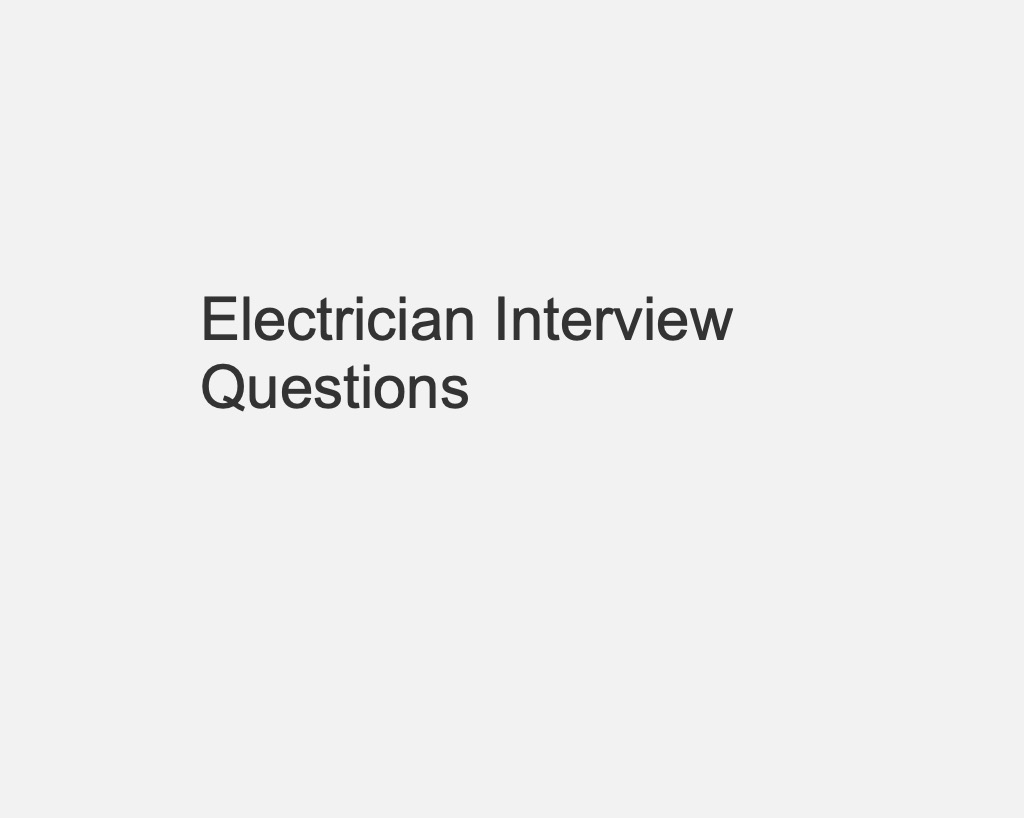Protection Interview Questions
1). What is the use of the negative phase sequence relay?
The negative sequence relays protect generators and motors from imbalanced loading that might result from phase-to-phase faults.
2). What is the differential relay’s operating principle?
The phasor difference of two (or) more similar electrical variables needs to exceed a specific threshold for a differential relay to activate.
3). Why is distance protection selected as primary protection for the transmission lines over overcurrent protection?
For the safety of transmission lines, distance relay is better than over current protection. Some of the factors include
Quicker protection,
Easier coordination,
Simpler application,
permanent settings that don’t require readjusting, reduced impact of generation level and fault levels, fault current size, and ability to support heavy line loading.
4). What are the advantages of biased differential protection over differential protection?
Biased differential relays are recommended because their operation is unaffected by the problem caused by the variation in CTs ratios for high external short-circuit current values.
5). Where are impedance relays, reactance relays, and mho relays used?
The impedance relay is appropriate for relaying phase faults on medium-length lines.
For ground failures, reactance type relays are used.
Mho type relays are applicable for lengthy transmission lines, particularly where synchronising power surges may occur.
6). What is a percentage differential relay?
It’s a differential relay with the operational current that is required to trip stated as a percentage of the load current.
7). What types of problems are likely to arise during the functioning of a three-phase induction motor?
The following faults are likely to occur in 3-phase induction motor operation:
Stator faults
Phase to phase faults,
Phase to earth faults, and
Inter turn faults,
Rotor faults
Earth faults and
Inter turn faults
Prolonged overloading,
Stalling,
Unbalanced system voltages,
Single phasing,
Under voltage, and
Reverse phase.
8). Why is long-term overload protection essential for induction motors?
Prolonged overloading of an induction motor result in excess increases in temperature in the stator & rotor windings, as well as damage to the insulation, resulting in a winding defect. As a result, overload protection is provided subject to the motor’s size or rating. Overload protection for motor cannot be initiated during motor startup.
Thermal overload relays (or) inverse over current relays are used to protect motors from extended overloading.
9). Why does an induction motor have negative sequence current protection?
When the motor is supplied with an imbalanced supply voltage, negative sequence of currents flow into it. The flow of the negative sequence currents will result in the motor to overheat.
10). What is stalling in an induction motor & how can it be avoided?
Induction motors fail to start owing to technical problems in the motor (or) severe overloading at startup.
Stalling is a condition in which the motor fails to start and is undesirable since the motor draws high currents. As a result, the motor should be disconnected from the power source immediately.
An instantaneous over-current relay is used for protecting the motor from stalling.
11). What is single phasing?
Single phasing in an induction motor is an open circuit in one of the supply lines from a three-phase system. In this condition, the motor continues to run while supplying a load that does not exceed 57.7% of its normal rating and experiencing the same temperature increase as a three-phase supply operating at full load.
12). What difficulties does single phasing cause with induction motors?
Single phasing has a number of disadvantages, including
The potential for severe magnetic unbalance,
A decrease in motor performance, and
Overheating owing to the negative phase sequence currents.
It is not suggested to operate the motor in such a condition since it will harm it. As a result, thermal overload relays can be used to protect the motor against single phasing.
13). What is the purpose of a circuit breaker?
An electrical circuit can be closed or opened using a mechanical mechanism called a circuit breaker, depending on normal or abnormal conditions.
14). What distinguishes a circuit breaker differ from a switch?
A switch is basically a device that, when used normally, can open and close a circuit. On the other end, a circuit breaker has the capacity to open & close the contacts in abnormal or fault conditions.
Circuit breakers therefore have a probability to break & generate strong short circuit currents. The circuit beaker’s auto-reclosures have the capacity to reclose after a certain amount of time to check if the short circuit has been resolved.
15). What does “making capacity of circuit breaker” refer to?
The maximum current wave’s peak value (including the DC component) in the initial cycle of the current after the circuit breaker closes the circuit determines the circuit breaker’s making capability during a short circuit.
16). Why does current chopping not occur frequently in the oil circuit breakers?
In most oil circuit breakers, the arc extinguishing power is directly proportional to the size of the current to be interrupted, hence current chopping is uncommon.
17). What materials are the contacts on vacuum circuit breakers made of?
There are several alloys used as contact materials in vacuum circuit breakers, including
Copper-bismuth,
Copper-lead,
Copper-tellurium,
Silver-bismuth,
Silver-lead, and
Silver-tellurium.
18). Why is current chopping seen as a major fault in the circuit breaker?
Since current chopping causes a large voltage transient to form across the breaker contacts, current chopping is seen as a major fault.
19). What kind of circuit breaker is often used for EHV applications?
SF6 gas insulated switchgear is preferred for the Extra High Voltage (EHV) applications.
20). What functions do circuit breakers perform?
The following are some of the functions of the circuit breakers:
Asynchronous switching,
Switching of un-loaded transmission lines & cables,
Switching of capacitor banks,
Switching of reactors,
Interruption of terminal faults,
Interruption of short line faults,
Interruption of minor inductive currents.
21). What are the typical generator fault types?
The following fault types frequently affect synchronous generators:
Stator winding faults
Phase to phase faults,
Phase to earth faults,
Inter turn faults,
Rotor winding faults
Conductor to earth,
Open circuit,
Inter turn faults,
Failure of the prime mover,
Failure of the field,
Unbalanced loading,
Overloading,
Overvoltage at generator terminals,
Over-speed,
Ventilation failure,
Loss of excitation.
22). What types of faults are protected by differential protection?
The phasor difference between the two (or) more electrical quantities triggers differential protection. It runs when internal problems with transformers or generators arise. Differential protection fails to function for external failures.
23). What drawback does regular differential protection have?
The CT’s(Current Transformer) on both ends of the generator winding have to be accurate to the same degree when the differential relaying is employed to protect the system.
Otherwise, if the CT errors are too high, the relay will operate improperly. In order to defend against such drawbacks, percentage-differential protection is used.
24). What advantage does percentage differential relay protection provide?
It allows for the use of a low fault setting, which ensures the windings are protected to the maximum level possible.
It is not required for CT’s (Current Transformer) with the air gaps (or) specific balancing features.
It ensures total stability even when there are the most severe through-fault conditions.
25). Explain Differential Protection?
Differential protection typically provides protection for internal fault-protected equipment or groups of equipment.They are the major protection systems (faster) for internal problems in the protective zone.
Healthy windings have equal currents at both ends. No current flows via the relay working coil because CT secondaries create equal EMFs. The relay operates when an earth fault or phase-to-phase fault occurs because differential current that flows through the relay operating coils. Relay operates for zone-protected faults.
Statement: Respect the original, good articles worth sharing, if there is infringement please contact delete.
Hobo is an electrical engineer with 10 years of work experience, mainly responsible for designing, developing and maintaining electrical systems and equipment.













